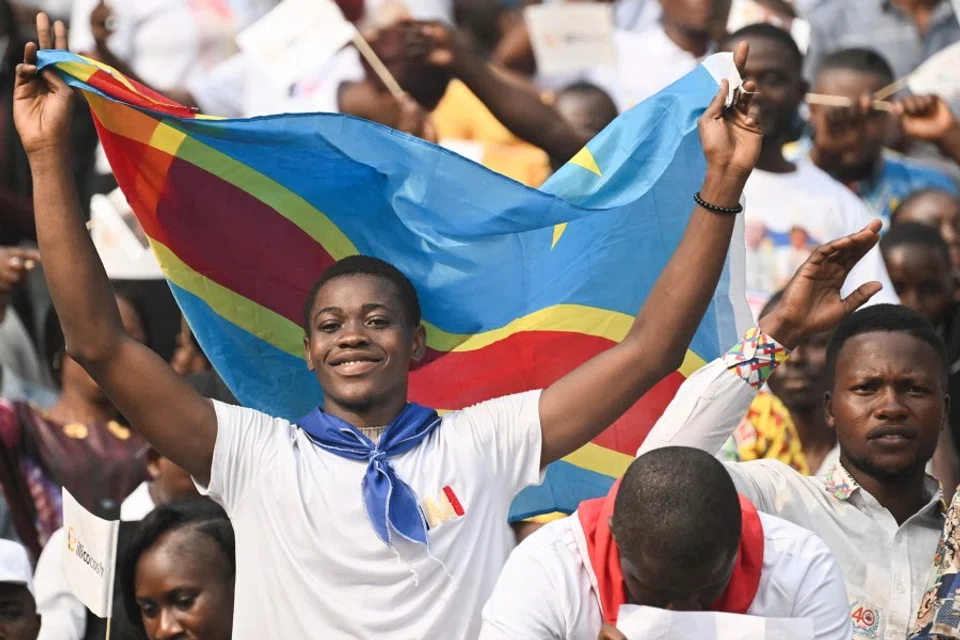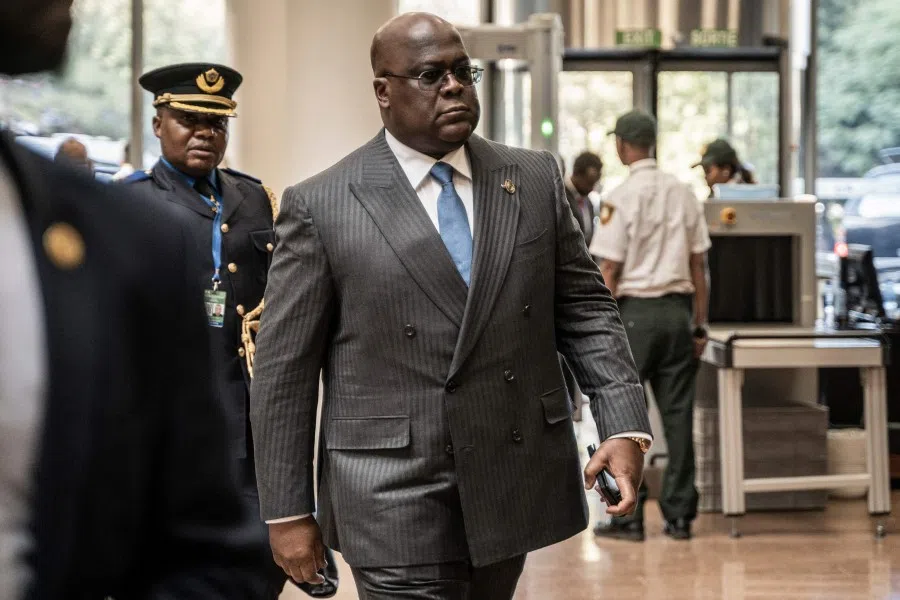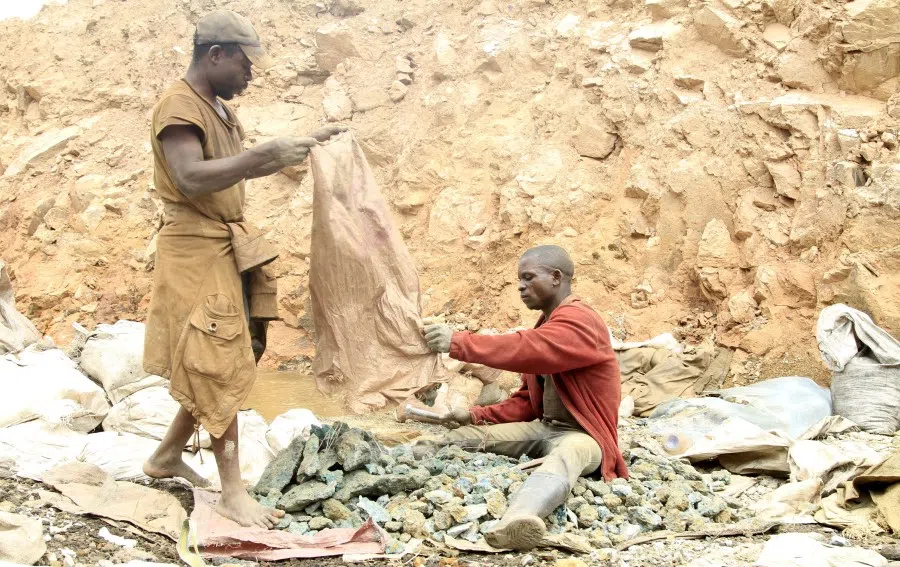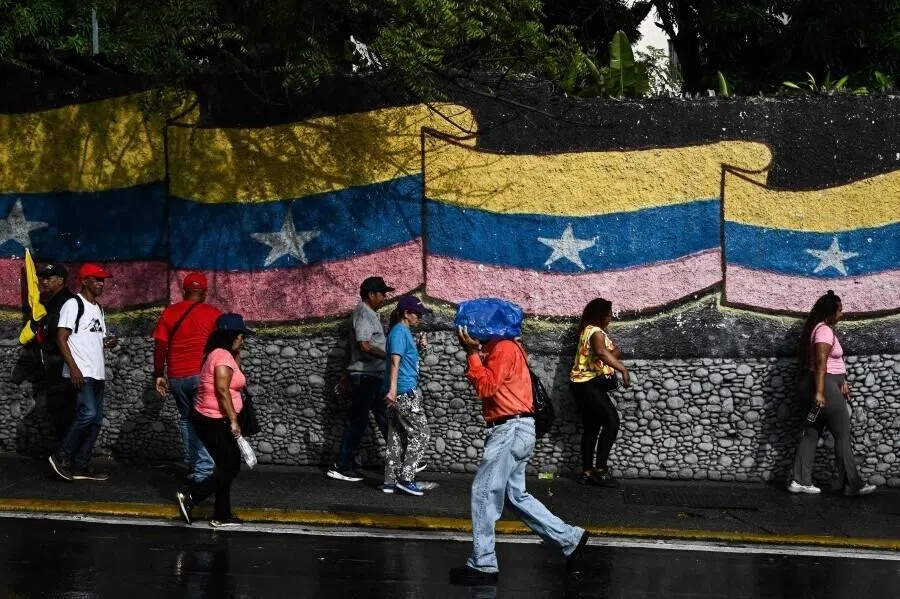Is the US subverting China's influence in the DRC?
In the battle for resources in the clean energy race, the Democratic Republic of the Congo (DRC) stands as a critical piece of the puzzle, holding access to key metals such as cobalt, lithium, copper and coltan. While China has been an early dominant investor, the US is upping the stakes and seeking to throw the competition wide open.

Africa's mineral and oil resources have long been coveted for industrial development in the global north. But the demand for these commodities has begun to shift in the face of growing climatic threats.
Now, as the world moves towards a greener future and global investment in oil falls, demand for metals such as cobalt, lithium, copper and coltan has ramped up significantly. Their role in "green" technologies has triggered a new wave of geopolitical competition.
Nowhere is this more acute than in the Democratic Republic of the Congo (DRC), where the power struggle between China and the US is intensifying.
To be sure, the DRC has a major comparative advantage. With approximately 70% of the world's cobalt reserves, vast copper and coltan reserves, and large, mostly untapped lithium deposits, the country is a critical cog in the future development of new-generation technologies, including electric vehicle (EV) batteries. As a result, Kinshasa is being aggressively courted by Washington amid Beijing's already robust presence in the DRC.
China an early entrant in the DRC
As it stands, China controls around 60% of the global EV battery market, and holds around 70% of the DRC's mining sector market share. This is rooted in historical factors. First, Beijing's voracious appetite for minerals over the past two decades has made China a major investor in key mineral markets, affording it an arguably unrivalled global resource network.
... China aggressively invested in the DRC from around 2005, as it courted then President Joseph Kabila.

Second, China aggressively invested in the DRC from around 2005, as it courted then President Joseph Kabila. During his tenure, Kabila oversaw the awarding of dozens of lucrative mining contracts to state-linked Chinese firms, which numerous investigations have revealed were underpinned by sizeable kickbacks for the political elite.
Friction with Western institutions equally saw the DRC increasingly rely on China for funding. The clearest example of this was the controversial 2007 US$6 billion Sino-Congolese minerals-for-infrastructure deal, which allowed China-backed firms to garner control over a number of major mining sites.
Third, the West has been largely ambivalent. Sino-influence in the DRC went relatively unchecked by the US, even as the development of the EV industry began to accelerate in the 2010s. And despite green technology emerging at the centre of the global sustainability debate from around 2015/2016, investment in these areas was largely ignored by the US administration of Donald Trump.
This left China with a wide opening to consolidate its position in the EV battery market - and the DRC. Moreover, reputation risks associated with the DRC's extensive corruption and challenging operating environment deterred any major moves by the West.
US aggressively playing catch-up
Now, in light of larger geopolitical factors - and despite China's sizeable influence over the DRC - the US is intent on playing catch up and is redoubling efforts in this regard.
Indeed, the balance of power has belatedly shifted following leadership changes in both the US and DRC, which saw Joe Biden and Felix Tshisekedi respectively assume power. This has catalysed a more constructive relationship since 2021, particularly given the business friendly reforms and policy orientation adopted by Kinshasa.
...the conditions of which [Extended Fund Facility from IMF] partially centred on mining sector reform and the reviewing of all controversial contracts - mostly Chinese - to ensure the receipt of appropriate revenue.

Several developments have entrenched this momentum. The first was the approval of a US$500 million loan from the World Bank in May 2021 for the development of socioeconomic infrastructure in Kinshasa.
After this, the International Monetary Fund (IMF) approved a US$1.52 billion Extended Fund Facility (ECF), the conditions of which partially centred on mining sector reform and the reviewing of all controversial contracts - mostly Chinese - to ensure the receipt of appropriate revenue.
By August, several contracts awarded to Chinese firms were suspended following the initiation of an audit. Shortly thereafter, the US government agreed to provide USD$1.6 billion to the DRC over five years as part of a joint cooperation accord.
Battling for supremacy in the 'clean energy revolution'
While these developments were not overtly anti-Chinese, the US government's interest in the DRC - and desire to decrease Chinese influence - became clear during a visit by its deputy security adviser Daleep Singh in January 2022.
In a press briefing following a meeting with Tshisekedi, Singh called China's operations in the DRC "opaque and coercive", and suggested that the US would make for a more mutually beneficial partner as it invests in the "clean energy revolution".
Intriguingly, Beijing had been largely silent about the DRC's manoeuvres and the West's shift, presumably as it battled multiple crises domestically, particularly the externalities of the pandemic. China also seemingly made few efforts to address the claims being made against its state-linked mining firms in the DRC.
In fact, after attempting to make piecemeal concessions, it has adopted a rather hostile position. This was particularly the case after the DRC in 2022 called for a review of the Sino-Congolese mineral deal, and subsequent threats to cancel the lucrative Tenke Fungurume mine contract failing modifications to the accord.
While China is by no means "persona non grata" in the DRC, developments over the past years have pointed to a growing shift towards the US following decades of Sino influence.
China's position has contrasted with the continued diplomatic charm offensive by the US. There were few Africa trips made by US secretary of state Antony Blinken in 2022 that did not involve visiting the DRC, while the Tshisekedi government was afforded more developmental funding support by the US.
The US efforts reached a milestone in January 2023, when Washington announced that it had signed a memorandum of understanding with the DRC and Zambia to help these countries - through technical support and investment facilitation - to develop an EV battery value chain. The US's role in the creation of what could emerge as a large EV production chain could well see it become the preferred EV battery export partner for the DRC, reducing its own dependence on China.

It should be noted that the US is not the only Western actor interested in the DRC. Australian firms, for instance, have begun to emerge as prominent investors in the Congolese mining industry. However, the US is the only one making an active attempt to subvert Beijing's influence in the DRC (and deemed the only capable actor given Washington's diplomatic and economic hegemony). While China is by no means "persona non grata" in the DRC, developments over the past years have pointed to a growing shift towards the US following decades of Sino influence.
China faces significant obstacles
China's ability to counter an aggressive charm offensive by the US will face various challenges. Foremost among these is China's unfavourable reputation in the DRC under the Tshisekedi administration, owing to both Beijing's resistant position to the mining sector audit and years of unsavoury operational practices.
Second, China cannot offer what the US does - local investment and development - which remain core policy priorities for the Tshisekedi government. This is underpinned by the fact that China is also unlikely to match US investment in any case, evident by limited inflows over recent years and as it emerges from its own crises.
The DRC's alignment with the US has also been advantageous with respect to the DRC's relationship with Bretton Woods institutions and the United Nations (affording it both access to funding and diplomatic support); under an acutely Beijing-aligned Kabila regime, the DRC's relationships with these institutions were strained.
...the DRC is in a unique position to balance accruing the economic and diplomatic benefits of aligning with the US, and still allowing China to continue its operations and associated contribution to the economy.
For Kinshasa, the US presents a strategic ally as the Tshisekedi administration seeks to move the country away from the economically destructive practices of former administrations. In addition to financial support, Washington's appeal lies in its clear alignment with the Congolese government's medium-to-longer term policy objectives.

These include addressing corruption, mining sector reform, local economic investment, and the development of domestic processing industries. China's historic involvement in the DRC has largely run counter to these, and it hasn't demonstrated an intent to support the country's development goals.
To be clear, this does not mark the beginning of the end of China in the DRC; the Asian giant will remain a dominant actor in the DRC's mainstay mining sector - and economy - for the foreseeable future. Indeed, in the expected absence of a direct counter to the US, China will very likely soften its resistant position in the DRC to protect its mineral inflows.
But, the DRC is in a unique position to balance accruing the economic and diplomatic benefits of aligning with the US, and still allowing China to continue its operations and associated contribution to the economy. In sum, the DRC can and must leverage its position for more favourable terms from both Washington and Beijing.






